7 MIN READ
Flea Beetle Management in Spring Canola
July 5, 2021
The flea beetle complex attacking canola, rapeseed and mustard consists of the crucifer flea beetle and striped flea beetle, with the primary species being the crucifer flea beetle (Figure 1). Both of these pests were introduced from Eurasia many years ago. Currently, both species are widespread across the United States and Canada. The adults are small, about 1/16-inch in length and can “hop” with the use of an enlarged hind femur, when disturbed. The biology and injury that the insects cause is similar.
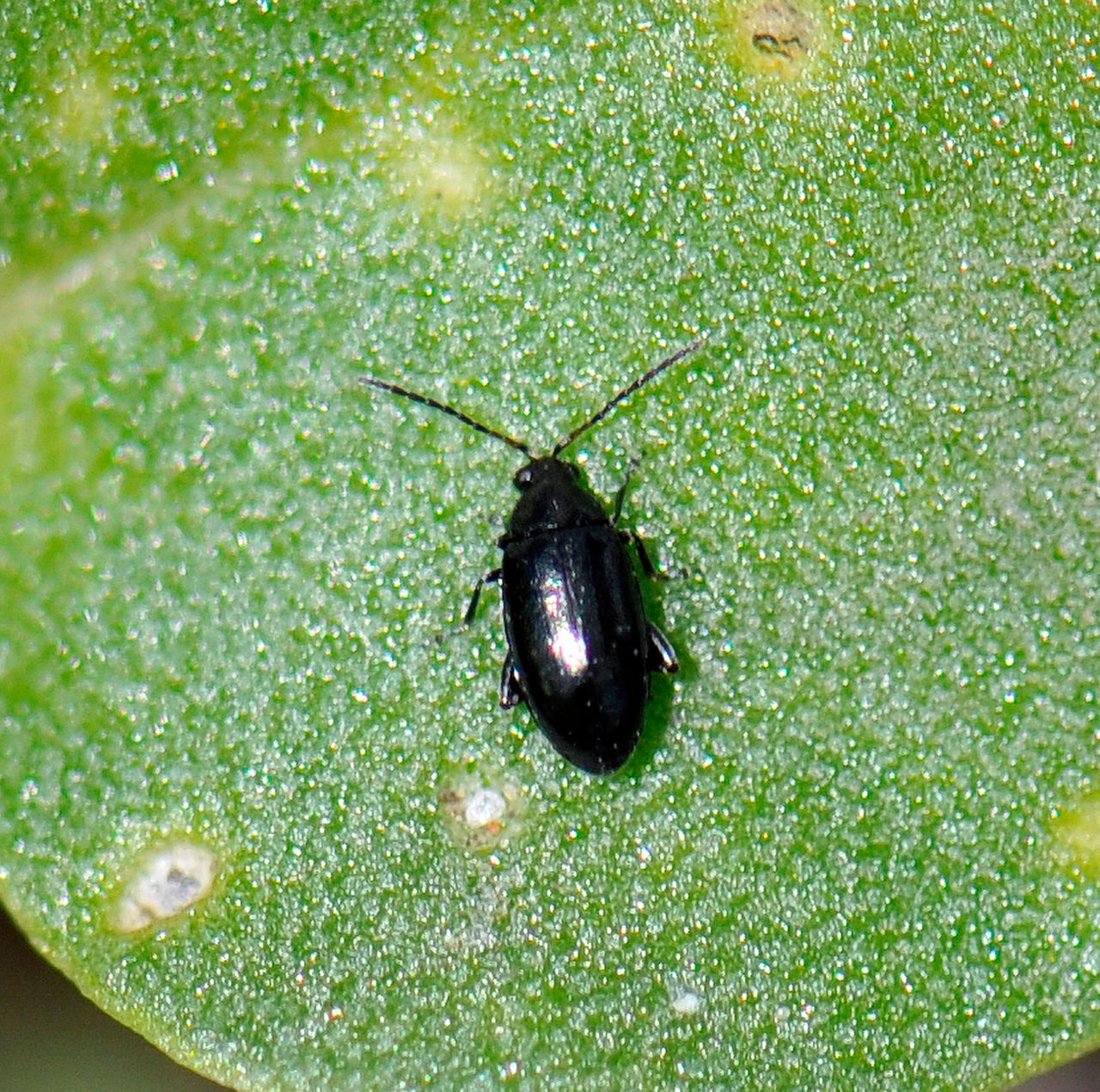


Figure 1. Top to bottom: Crucifer flea beetle, striped flea beetle and side by side striped and crucifer flea beetle. Images courtesy of Patrick Beauzay, North Dakota State University.
Biology
Beetles overwinter in leaf litter and grass thatch outside of host plant fields and become active when temperatures reach 57°F in the spring. Emergence occurs over a three-week period. The striped flea beetle usually emerges first. Upon emergence, the adults feed on volunteer host plants and weed hosts (yellow rocket). After seedling emergence, beetles move to host plant fields. Flight is promoted by warm and dry weather with light wind and slowed by cold and wet conditions when walking or hopping is more common.
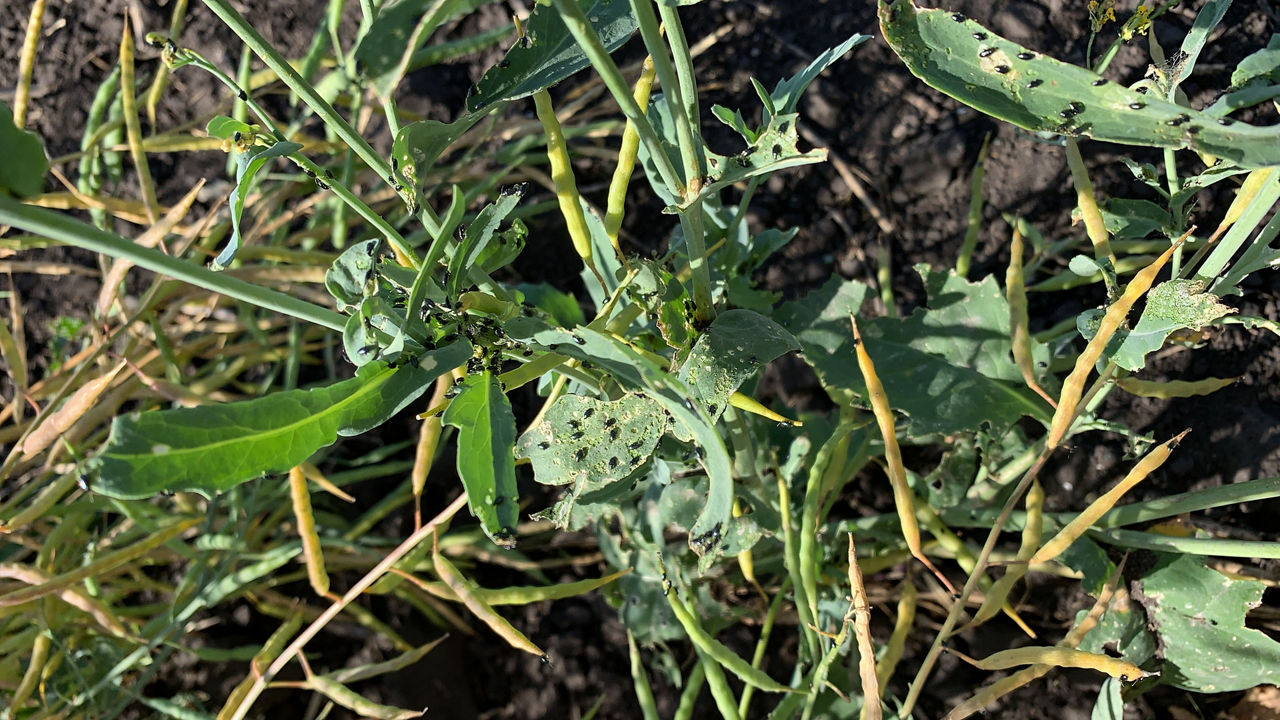
Warm and dry conditions, particularly under bright sunny days can slow canola growth and promote feeding and dispersal flight leading to infestations throughout the field. Cold and wet conditions lead to more concentrated feeding along field margins bordering overwintering areas. The overwintering adults will be active through June and start to die off in late June and early July. In June, females deposit eggs in the soil near host plants. Roughly two weeks later, the eggs hatch, and larvae feed on host plant roots. Larvae complete three growth stages (instars) in about a month prior to pupation, which lasts about a week. In late July through August, the summer generation of adults begin to emerge from the soil. The summer generation of adults feed on the epidermis of host plant leaves and pods. It is not unusual to observe an aggregation of summer adults feeding on a single plant (Figure 2). Adults move to overwinter sites in the early fall.
Injury
Adult flea beetles cause the primary damage when they feed on host plant cotyledons and first true leaves during two weeks after emergence, particularly during hot and dry weather. The adult feeding injury resembles pits in the cotyledons (Figure 3).
The leaf tissue at the feeding site will die and the pit will become a hole, resulting in a “shot-hole” appearance. Under extreme feeding injury the growing point can be injured resulting plant death. Feeding above the economic threshold can result in reduced plant stand, delayed growth and plant maturity, and reduced yield potential.
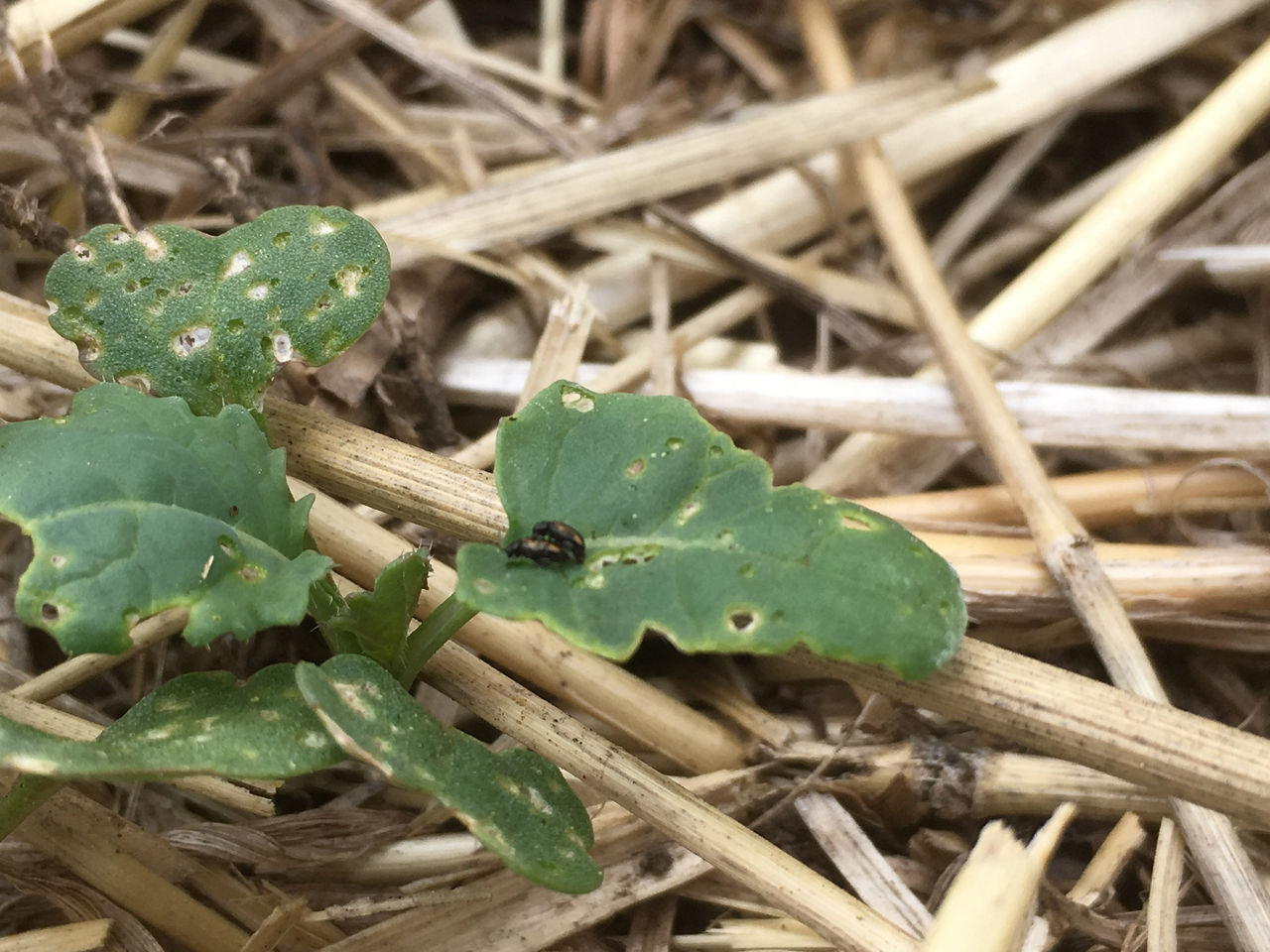
The injury of larvae feeding on roots has not been found to be of an economic impact in North Dakota; however, larval feeding has been found to result in about a 5% yield loss.1,2
Feeding by the summer generation of adults does not impact yield potential or quality once the crop has reached the 5.1 to 5.2 growth stages (flowering). Feeding injury by the summer generation can result in reduced seed yield and quality, particularly on late planted fields. However, the impact is usually not an economic concern.
Management1,2
Preventative Tactics
Preventative tactics include those approaches that are used prior to the presence of the insect pest or injury and are usually used in response to the risk of an economic impact. Seed treatments of either the neonicotinoid or ryanoid classes of insecticides can be used. Cultural methods include planting as early as feasible to hopefully avoid hot and dry conditions during the first two weeks after emergence. Additionally, early planting of a vigorously canola product can help the plants to reach a size that can be more tolerant to injury. Planting as shallow as moisture is available for germination can help speed up emergence. A no-till cropping system in conjunction with early seeding can help provide an excellent environment for the plants and one that is not as conducive to flea beetle activity. Increasing the seeding rate can assist in reducing the impact of the feeding injury on an area basis. At the same seeding rate, a wider row spacing of 8 to 12 inches over 4-inch row spacing can result in less beetle injury on a per plant basis. Noting populations of adult flea beetles in the fall, in the area that will be planted to canola in the next growing season, can help provide an indication of the risk of injury for the next growing season.
Responsive Tactics
Sampling flea beetle populations with the use of a commercially available yellow 4-inch by 10-inch sticky traps can be used to determine flea beetle presence but not as a basis for control decisions. If flea beetles are observed on the yellow sticky cards or if there has been a history of flea beetle injury, begin daily monitoring and assess injury during the first two weeks after emergence or until the four-leaf stage. Sampling for plant injury should be conducted during sunny, warm, and calm weather conditions as this is when feeding injury is at the highest rate.
The extent of injury is the guide to determine if an insecticide application should be made. Begin sampling at the edge of the field, adjacent to tree lines or grassy areas, as beetles move out of these overwintering sites and begin to feed. Evaluate plant injury in several locations across the field, estimate the amount of injury on several plants in each area. The economic injury threshold is met when an average of 25% of the cotyledon or leaf tissue is damaged (Figure 4) and beetles are present.
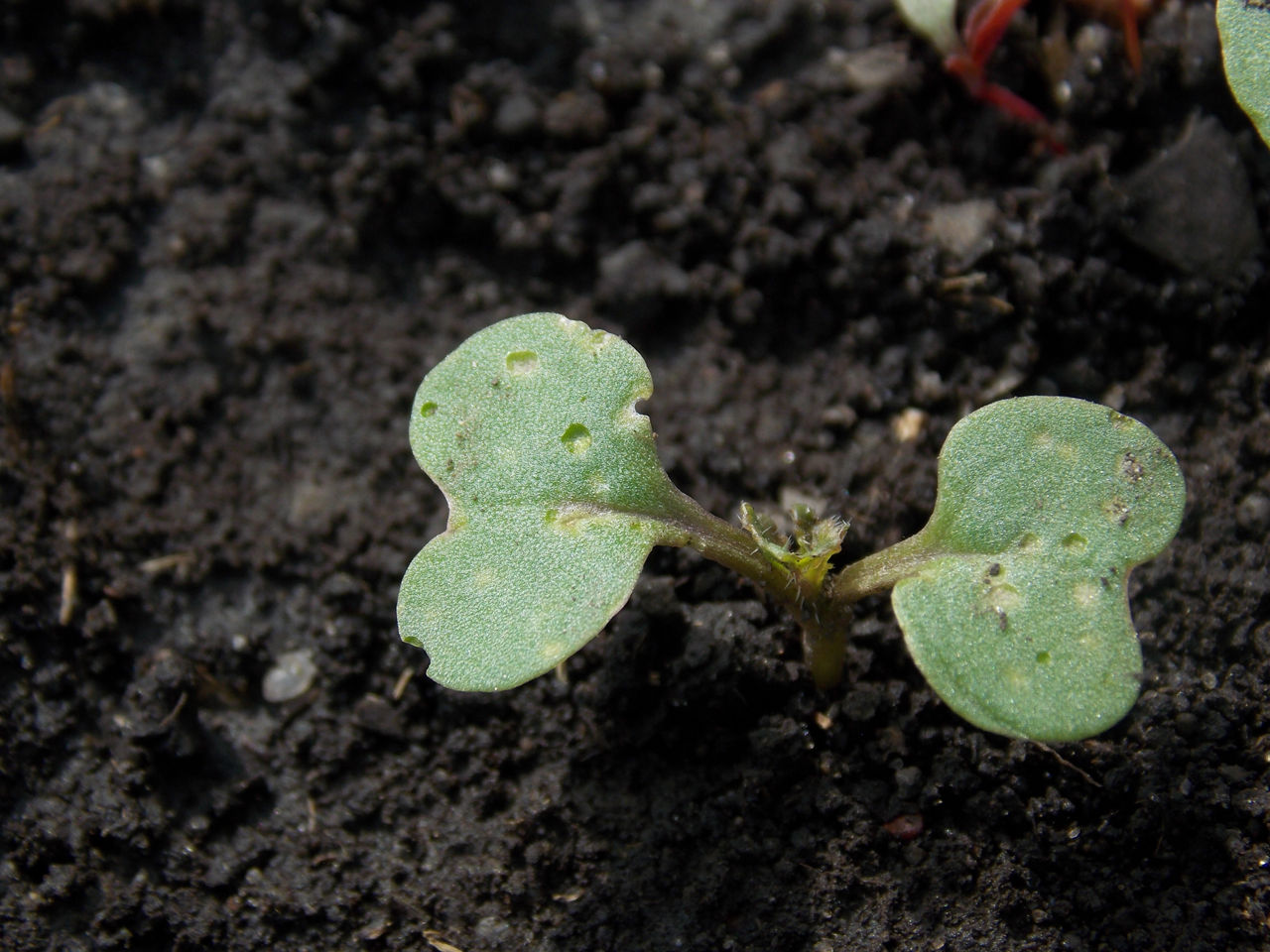

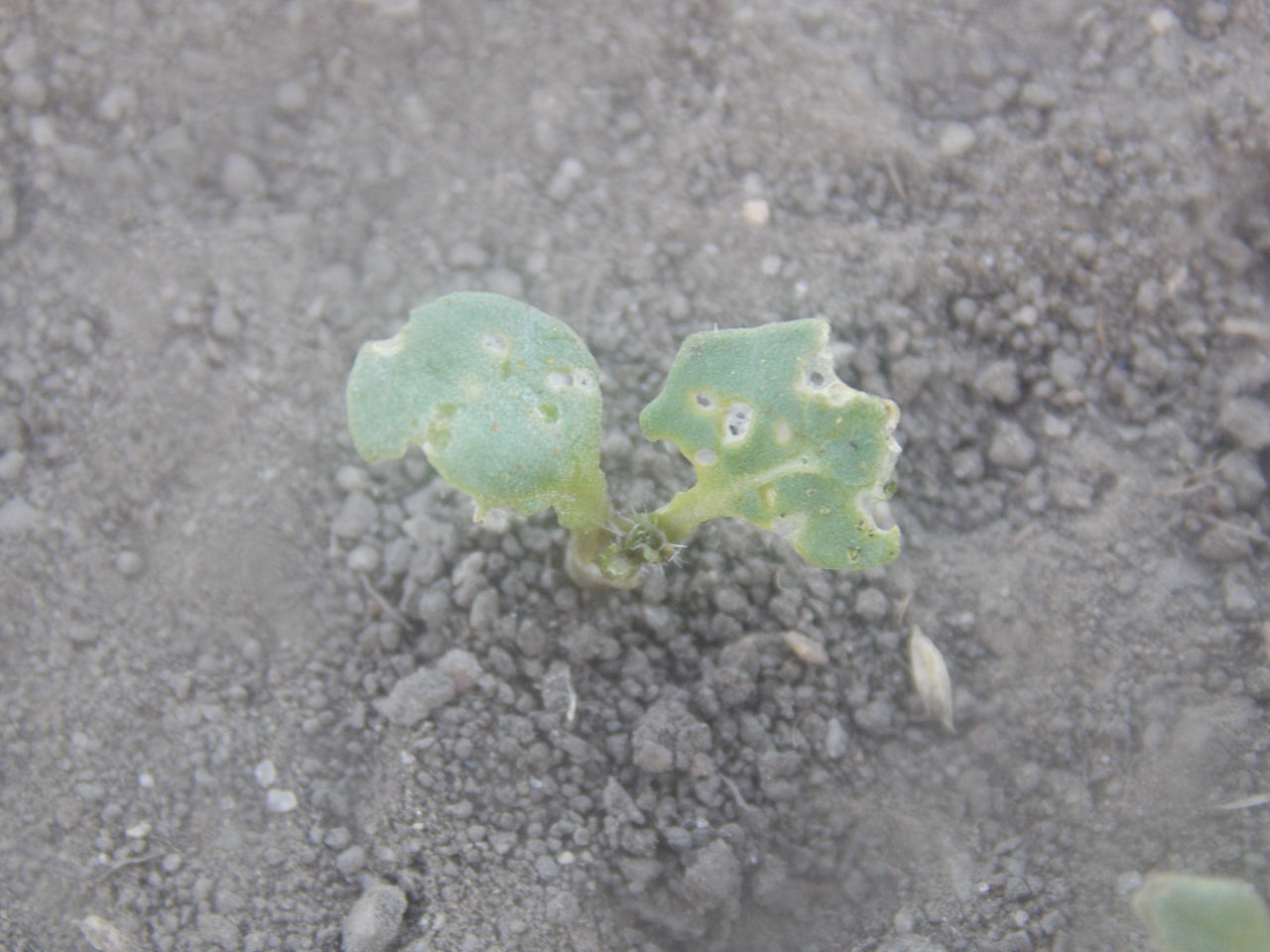
Figure 4. Top to Bottom: 10% flea beetle injury, 25% flea beetle injury (economic injury threshold), and 60% flea beetle injury. Images courtesy of Lesley Lubenow, North Dakota State University Extension
If the injury is less than 25% and the plants are actively growing, then the plants can typically recover from the injury (Figure 5). Injury can occur quickly under hot and dry conditions, so careful daily monitoring, particularly in the afternoon, is critical. Foliar applications of insecticide should be applied quickly once the threshold is reached or exceeded to prevent economic loss. Once the plants reach the four-leaf stage or later, flea beetle feeding usually will not result in a yield reduction; however, if beetles are injuring the growing point, yield loss can occur. During years of high abundance and favorable weather conditions for the beetle, yield losses can still occur even if insecticide treatments have been applied to the seed. In these cases, a foliar application of insecticide may be needed after three weeks from planting to protect the field from re-infestation.1
Growers should consult their chemical input supplier about registered seed treatment and foliar insecticides that are available.
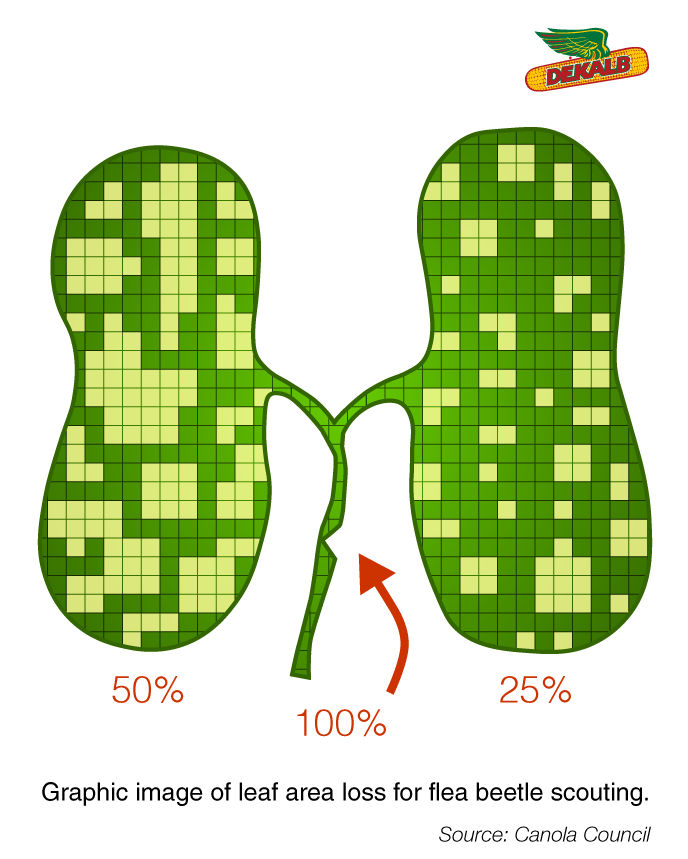

Sources
1 Knodel, J. Lubenow, L., and Olson, D. 2017. Integrated Pest Management of Flea Beetles in Canola. North Dakota University Extension. https://www.ag.ndsu.edu/publications/crops/integrated-pest-management-of-flea-beetles-in-canola#:~:text=About%2095%20percent%20of%20canola,flea%20beetle%20populations%20are%20low.
2 Gavloski, John. 2020. Flea Beetles on Canola and Mustard. Manitoba Agriculture and Resource Development. https://www.gov.mb.ca/agriculture/crops/insects/flea-beetles-canola-mustard.html.
4032_S1